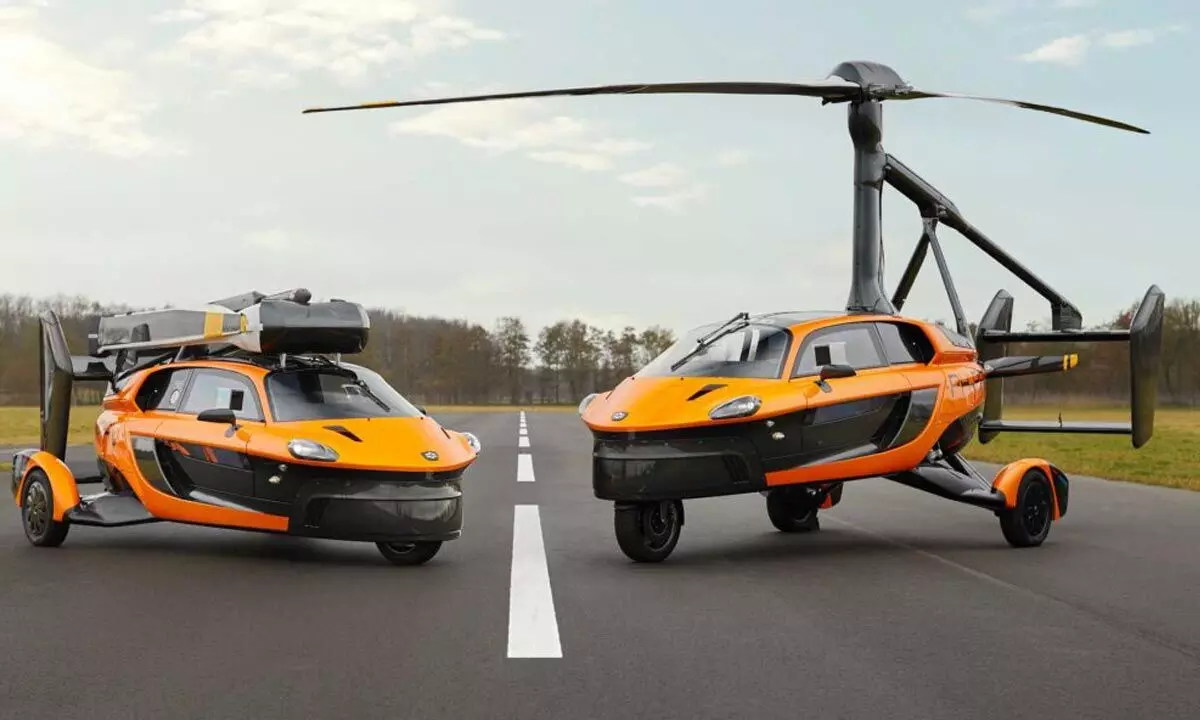Flying cars are zooming in thick and fast
They will be an everyday lifestyle feature from 2028: WEF
image for illustrative purpose

Like an aircraft, the flying car will have a fixed wing, propeller or engine that provides it the thrust. Flying cars may also be equipped with a helicopter rotor for VTOL capability. Power has traditionally been provided by an internal combustion engine burning fossil fuels but electric propulsion is undergoing rapid development in the field of flying cars.
There is no question that technological advancements are on their way. A review by the Massachusetts Institute of Technology (MIT) identified 20 “small airborne vehicles” in production or development, some of which have already achieved flight certification.
Flying cars should be available commercially by next year. However, regulations for managing flying cars and air traffic will be a concern for the authorities. It is definitely a viable concept and many flying cars have been successfully tested. Road cars and aircraft are built very differently, so a flying car will have to be a compromise between the two.
Flying cars are coming out sooner than one expected. Flying cars technology has advanced quite a bit in the past few years. A few flying cars have been tested and could be available to the public by 2023 -2024.
Many are electric, offering lower emissions than conventional cars or helicopters. And although most require a pilot, some air taxis are being designed to fly autonomously, mirroring developments in driverless cars and buses on city roads.
Flying cars have certain hurdles they must overcome such as lack of infrastructure, advanced technology and air traffic regulations. Flying cars need a place to land so they most likely will have to use an airport as a landing strip, due to crowded cities.
Uber (the ride-sharing company) has an aerial flying car called the Uber Elevate which has been acquired by Bell Nexus and Joby Aviation. They have a concept that uses an all-electric powertrain, a VTOL air taxi that is set to debut this year. It is very likely that flying cars will exist in the future.
Of course, flying cars are not the only aircraft that will be competing for space in the skies.
Last year, Amazon received approval to operate its Prime Air drone delivery service in the US. The drone delivery revolution has prompted the development of new air traffic control (ATC) technology to control low-level air traffic and avoid collisions. NASA’s Air Traffic Management Exploration (ATM-X) project has created a virtual platform to try out new air traffic technologies.
Then there’s the question of power. Electric propulsion is seen as vital if flying taxis are to be accepted as a greener form of transport. The world’s first fully electric plane, the two-seat Pipistrel Velis Electro, was granted type certification by the European Union Aviation Safety Agency (EASA) in 2020.
Although some of the flying cars in the development stage plan to use electric power, most are being test-flown with conventional petrol engines. But experts say new types of battery will need to be developed before electric flying cars can become an everyday transport mode.
The starting price for the PAL-V Liberty is Rs.2.6 crore. Other flying cars will be in this price range which is keeping them out of the hands of the common man right now.
The future of flying cars will most likely be realized with vehicles such as the AeroMobil 3.0, PAL-V Flying Car, Maverick Flying Car, The Transition, AeroMobil 4.0 and the Terrafugia TF-X.
Germany-based Volocopter says it wants its VoloCity to be the first commercially licensed, electrically powered air taxi. Although in trials, it has flown with a pilot at the controls, the goal is eventually to make flights autonomous with just passengers aboard. The PAL-V Liberty gyroplane flying car is moving closer to full airworthiness certification by the EASA, which has recently agreed the process its Dutch makers need to follow to gain type approval. The vehicle is already licensed to run on roads like any other car.
Terrafugia’s Transition, a flying car with folding wings, has been granted a Special Light-Sport Aircraft (LSA) airworthiness certificate in the United States.
Others are close behind. The AeroMobil luxury flying car is intended for launch this year with a top road speed of 160km per hour and a flying range of 740km. On the road (and in the air) prices are reported to start from $1.6 million.
The AeroMobil flying car, also set for a 2023 launch, is likely to cost $1.6 million.
The World Economic Forum’s Principles of the Urban Sky report says flying cars and air taxis could be a feature of city life from 2028 onwards. What’s more, it says that for every job created in this new aero industry, a further six jobs will be created indirectly on the ground.

